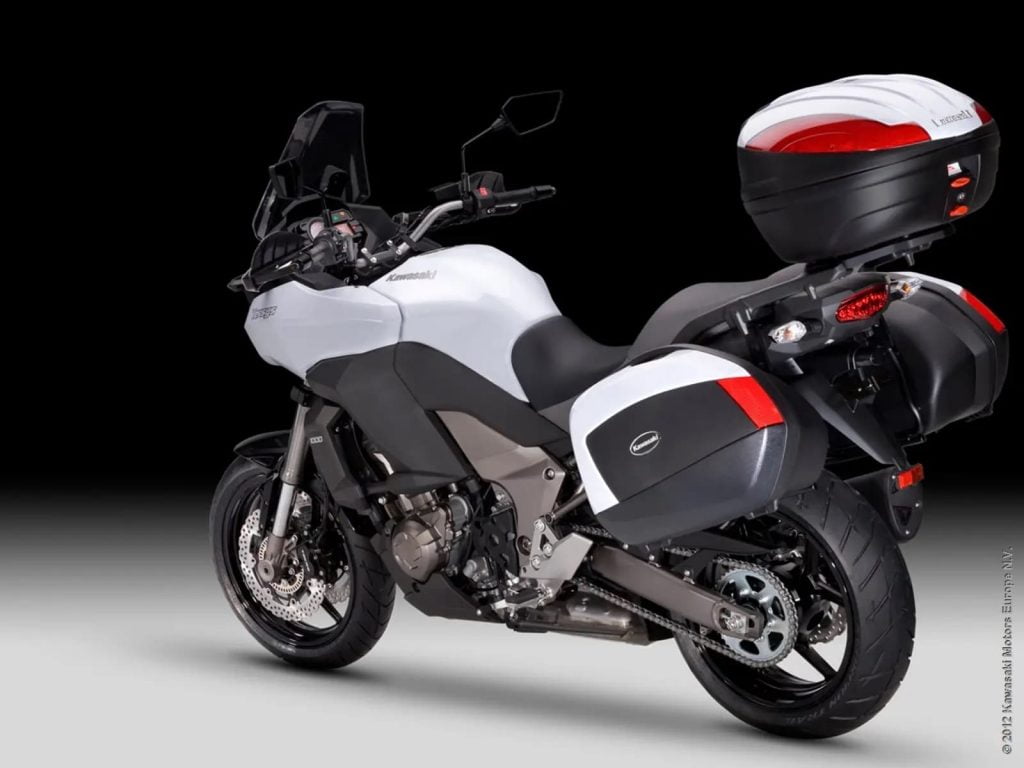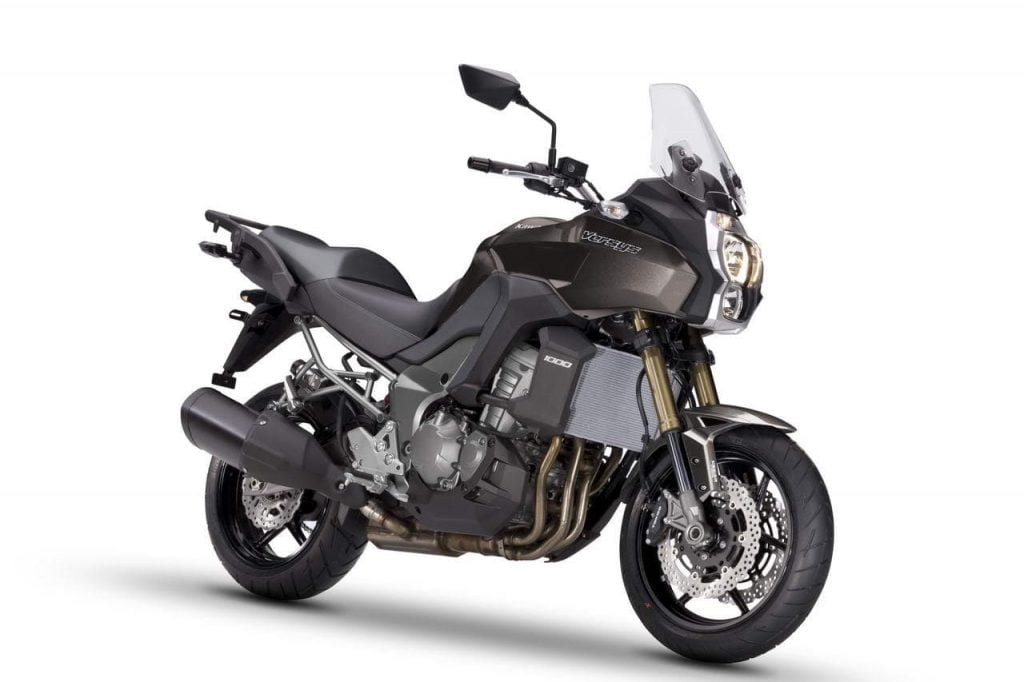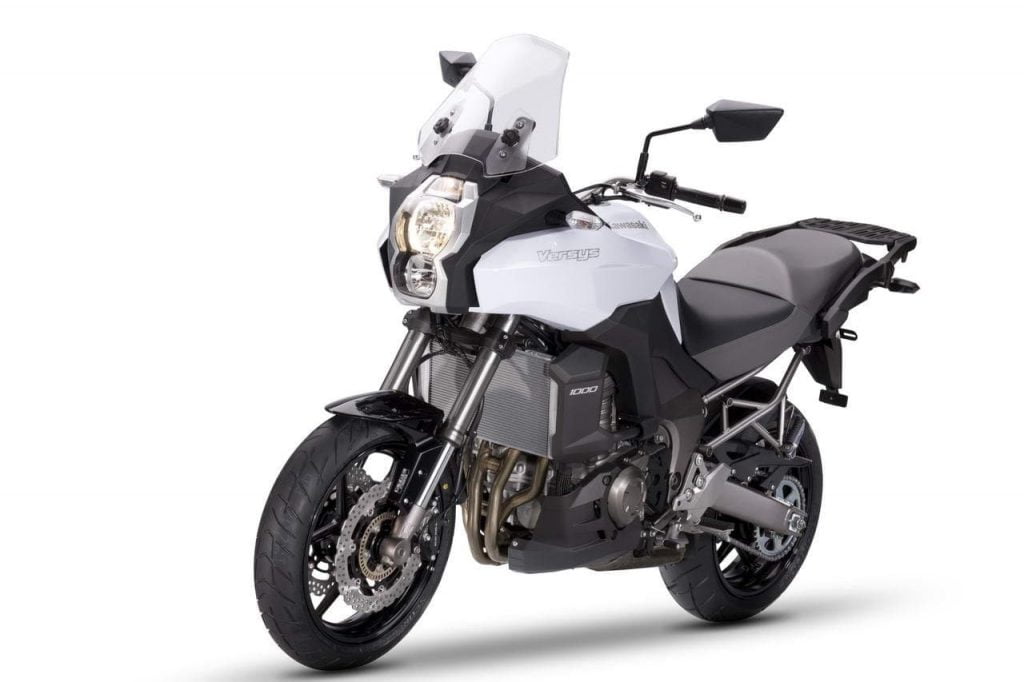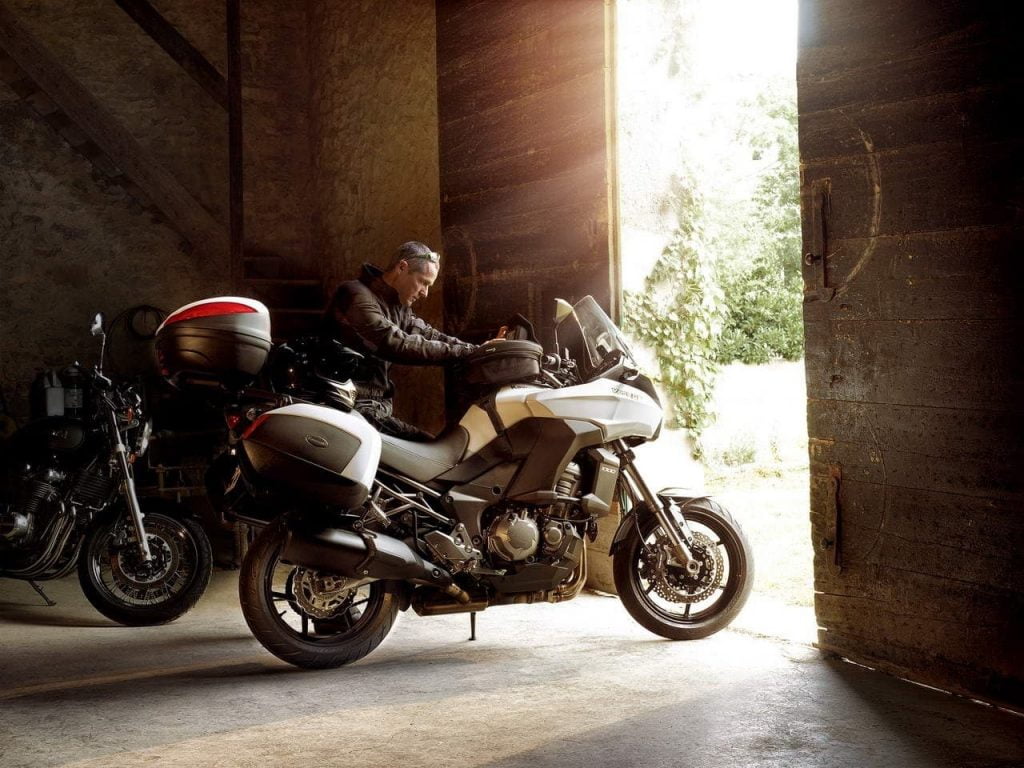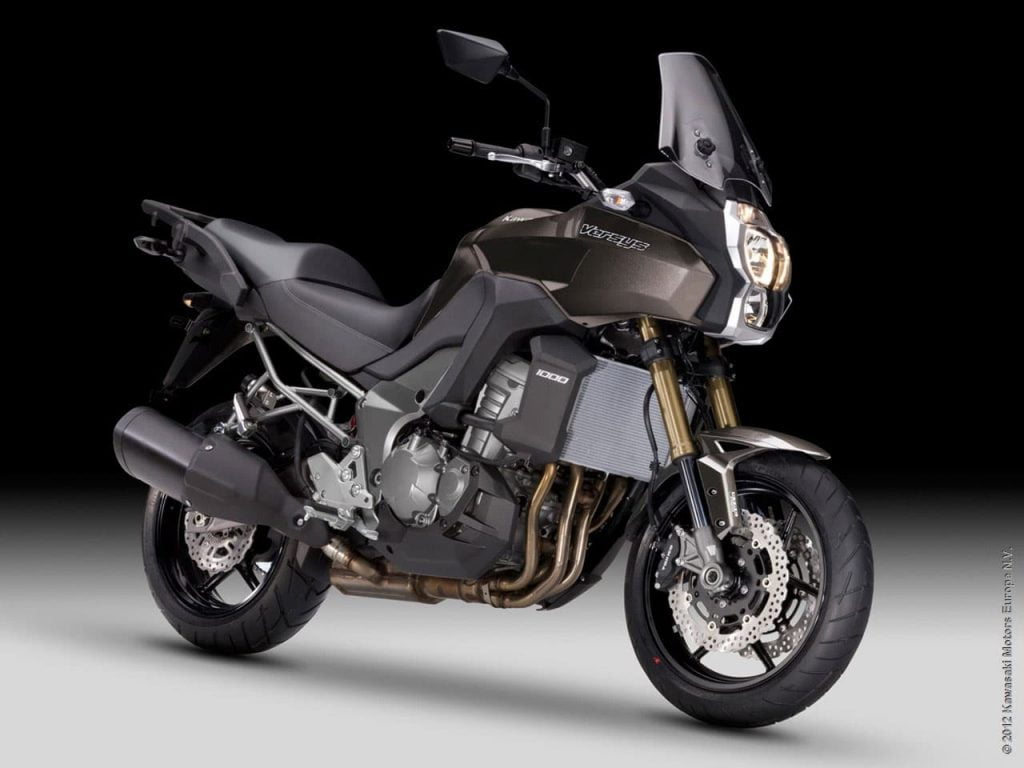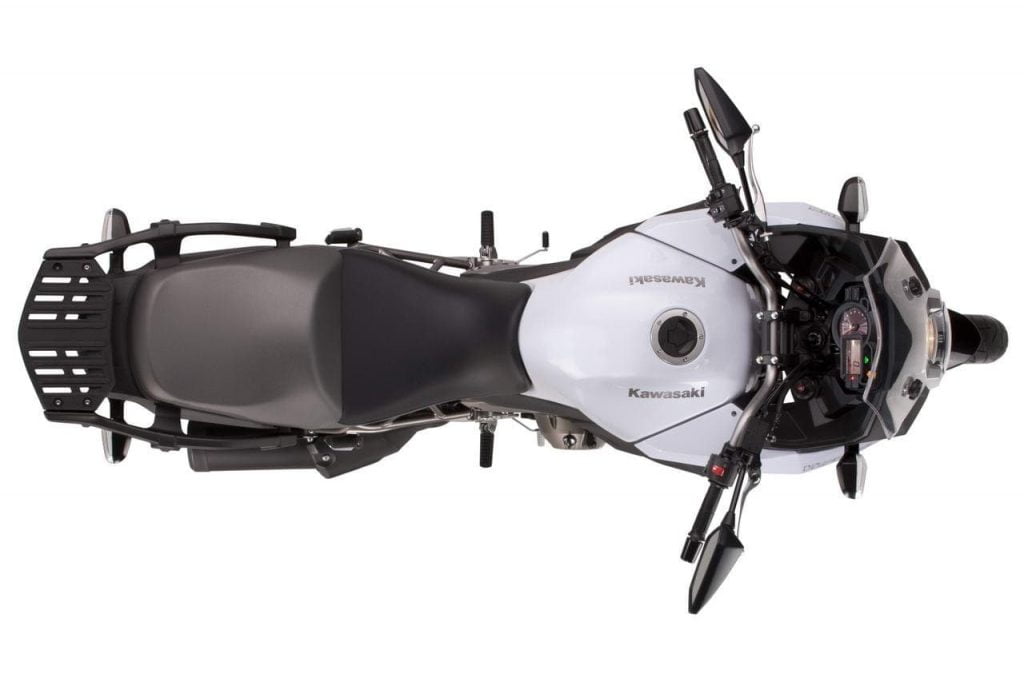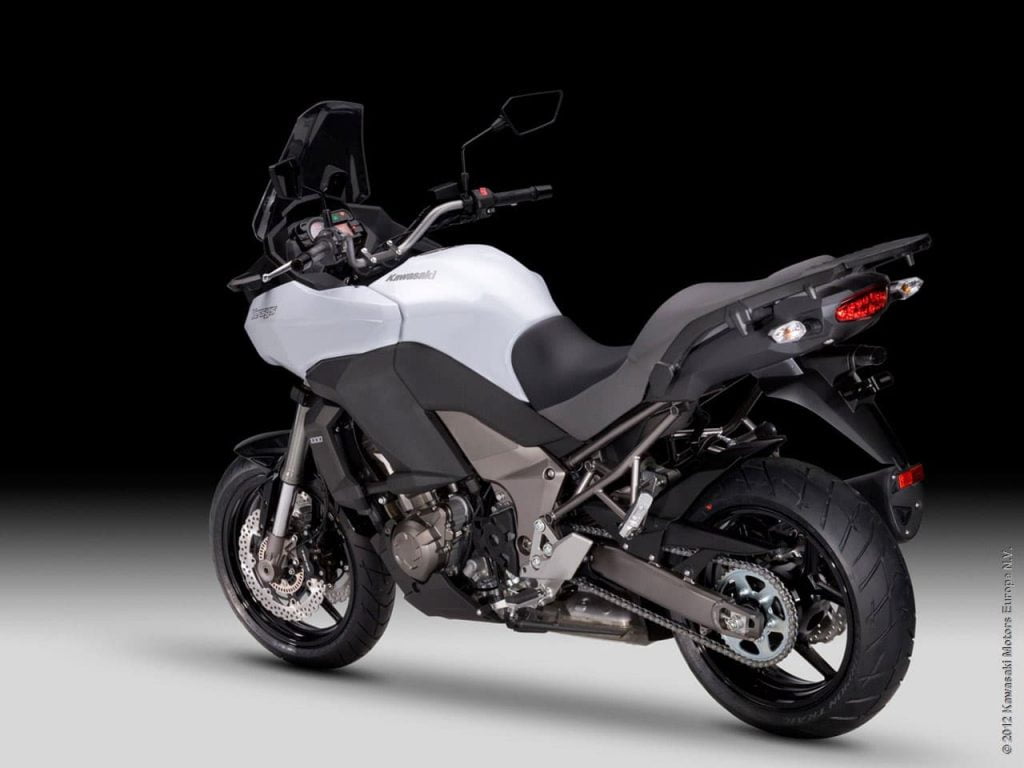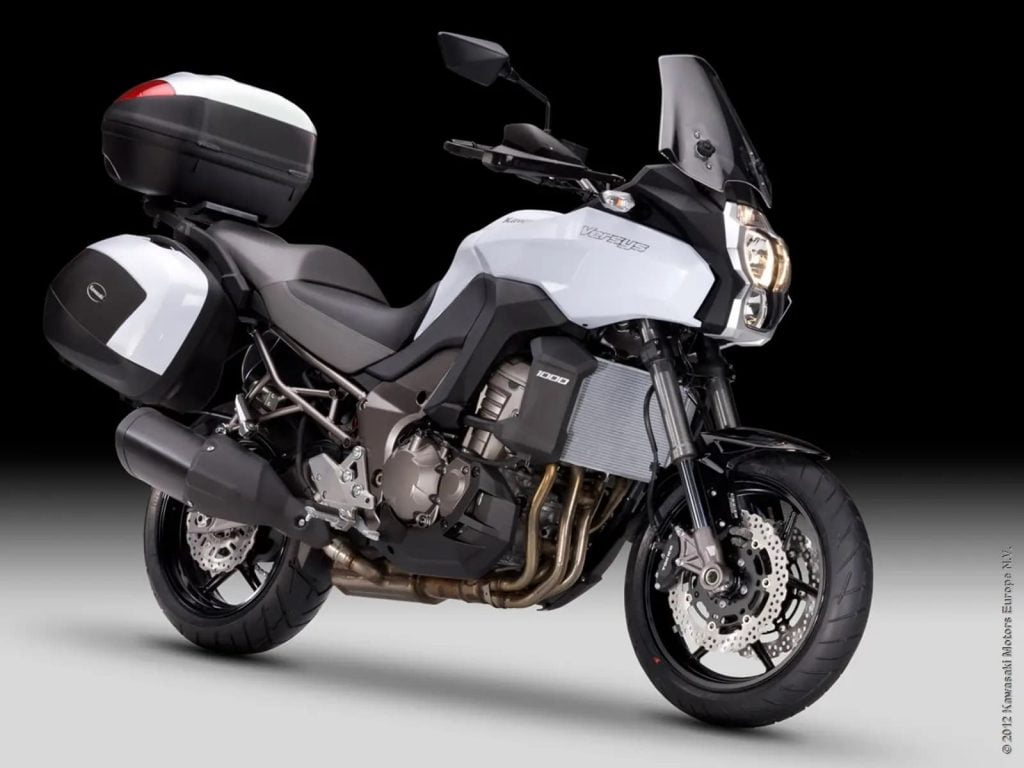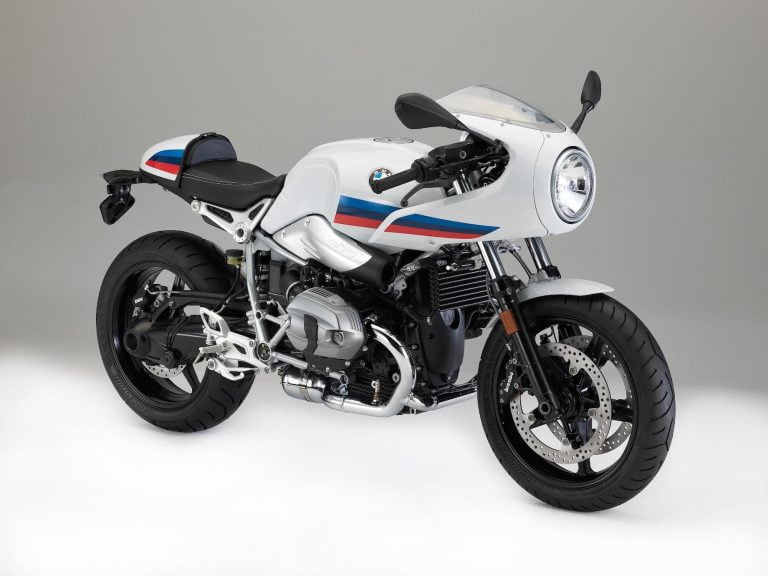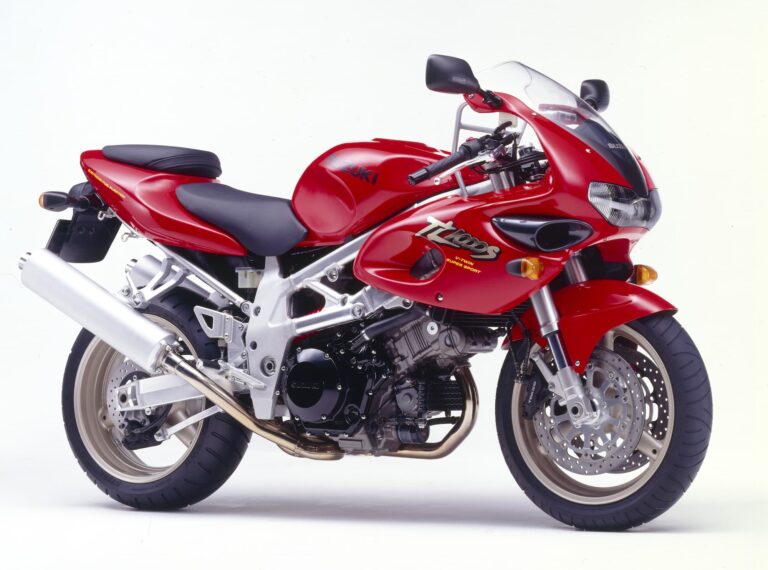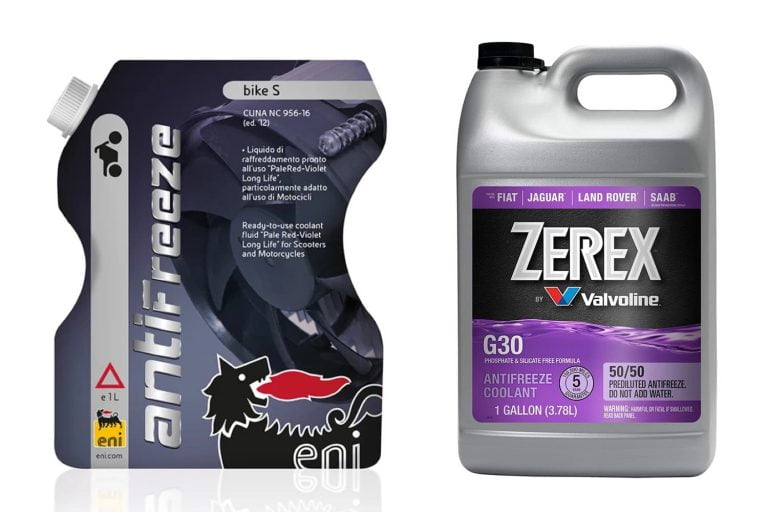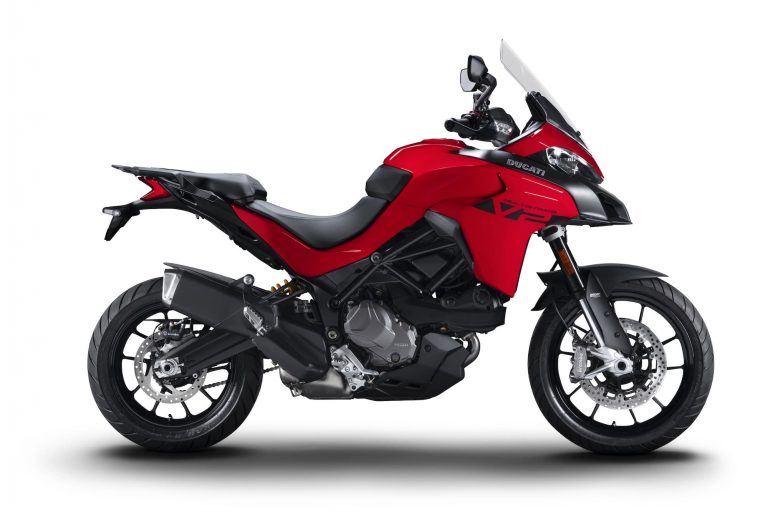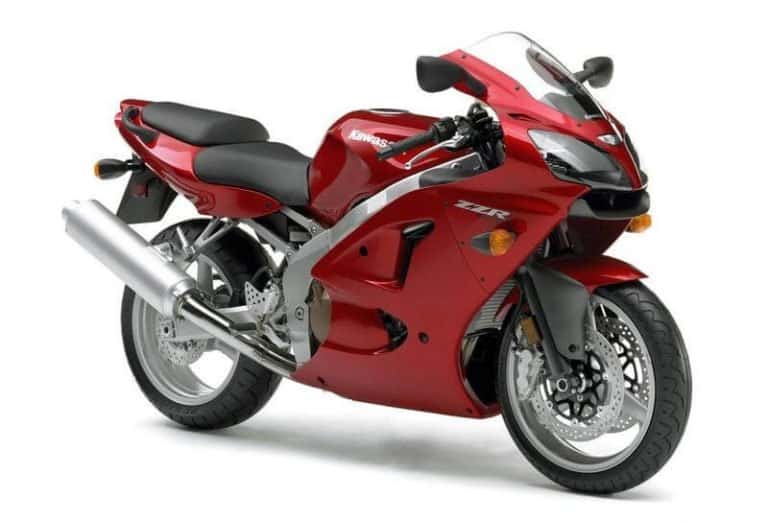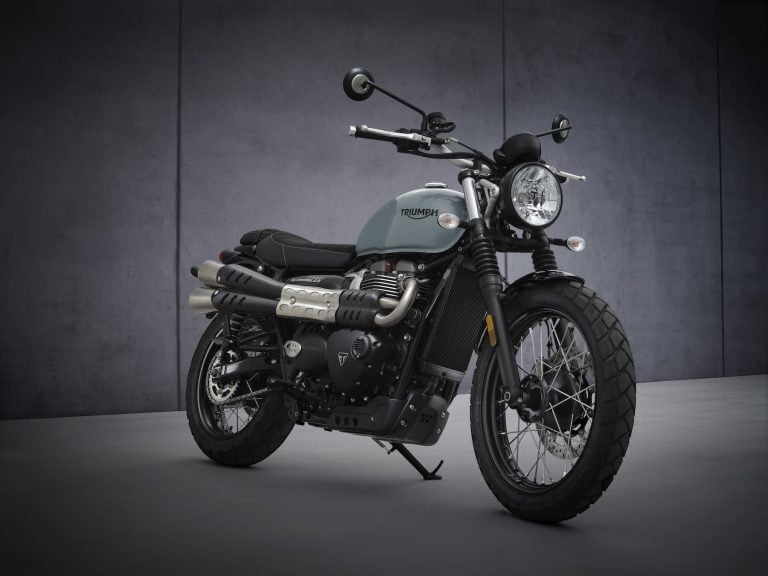Kawasaki Versys 1000 Gen 1 (2012-2014) Maintenance Schedule and Service Intervals
This is the maintenance schedule and service intervals for the original Kawasaki Versys 1000, released late in 2011 for the 2012 model year. This generation of Versys 1000 wasn’t available in the US.
The original Versys 1000 was based on the original Kawasaki Ninja 1000, though it had an engine tuned for more midrange torque.
The Versys 1000 has been through a number of iterations:
- Gen 1 Versys 1000 (2012-2014): Released late in 2011 for the 2012 model year, using the 1,043 engine from the Ninja 1000/Z1000 but in an upright, sport/adventure touring chassis.
- Gen 2 Versys 1000 (2015-2018): Upgraded front suspension and braking, and significant style improvements.
- Gen 3 Versys 1000 (2019+): Six-axis IMU, cruise control, and active electronic suspension (SE and LT models), and more style improvements.
All generations of the Versys 1000 since launch have been based on the same 1,043cc inline-four cylinder DOHC liquid-cooled engine inherited from the Z1000 (and originally from a ZX-10R). It’s a long-stroke engine that’s torque heavy.
In 2015, the Kawasaki Versys 1000 was significantly updated with the Gen 2 Versys 1000 (2015-2018).
This post was originally published on July 12, 2021, but has since been updated considerably.
This site has links for things like oil and spark plugs from which we earn a commission (which unfortunately nobody can save, not even us). If you appreciate this work, then please use those links. Thanks!
Kawasaki Versys 1000 Service Intervals
The Kawasaki Versys 1000 has an oil change service interval of 7500 miles or 12000 km, or annually. Kawasaki also does specify checking the brakes between those services.
Kawasaki also recommends you change the spark plugs every 7500 miles or 12000 km, though not with a time interval.
The major valve clearance service for the Versys 1000 is every 26250 miles or 42000 km. That’s very wide!
Aside from that, keep the brake fluid and coolant fresh, and keep external parts lubricated.
Kawasaki Versys 1000 (2012-2014) Maintenance Schedule
Below is the maintenance schedule from the Versys 1000 from 2012-2014. This is from the 2014 manual.
The items listed are quite different to the successor of the Kawasaki Versys 1000 released in 2015. More things are separated out.
Further, the original schedule was broken into sections that made it hard to navigate. To the extent possible we’ve grouped things together and merged it into one universal schedule.
Notes:
- Valve service interval is 42,000 km. The manual had a note for the valve service interval for the CA model being 24,000 km (15K mi) with no explanation.
- For higher odometer readings, repeat at the frequency interval established here.
Legend:
- I = Inspect (and adjust/lubricate as necessary)
- L = Lubricate
- R = Replace/Renew
- # = Service more frequently if ridden in severe conditions – dusty, wet, muddy, high-speed, etc.
| km x 1000 | 1 | 6 | 12 | 18 | 24 | 30 | 36 | |
|---|---|---|---|---|---|---|---|---|
| mi x 1000 | 0.6 | 3.75 | 7.5 | 11.25 | 15 | 18.75 | 22.5 | Every |
| Engine oil and oil filter | R | R | R | R | Year, R | |||
| Oil filter | R | R | R | R | Year, R | |||
| Air cleaner element | R | R | ||||||
| Spark plug | R | R | R | |||||
| Engine vacuum synchronization | I | I | I | |||||
| Valve clearance | 42K km (26.25K mi), I | |||||||
| Coolant | I | I | I | R | 3 years/36K km (22.5K mi) | |||
| Throttle control system (play, smooth return, no drag) | I | I | I | I | Year, I | |||
| Idle speed | I | I | I | I | ||||
| Fuel leak (fuel hose and pipe) | I | I | I | I | Year, I | |||
| Fuel hose and pipe damage | I | I | I | I | Year, I | |||
| Fuel hose and pipe installation condition | I | I | I | I | Year, I | |||
| Fuel hose | 5 years, R | |||||||
| Coolant leak (water hose and pipe) | I | I | I | I | Year, I | |||
| Water hose damage | I | I | I | I | Year, I | |||
| Water hose installation condition | I | I | I | I | Year, I | |||
| Radiator hose and O-ring | R | 3 years/36K km (22.5K mi) | ||||||
| Air suction system | I | I | I | |||||
| Clutch operation (play, engagement, disengagement) | I | I | I | I | ||||
| Tire air pressure | I | I | I | Year, I | ||||
| Tire tread wear, abnormal wear | I | I | I | |||||
| Wheel/ tire damage | I | I | I | |||||
| Wheel bearing damage | I | I | I | Year, I | ||||
| Drive chain wear | I | I | I | |||||
| Drive chain guide wear | I | I | I | |||||
| Brake fluid leak | I | I | I | I | I | I | I | Year, I |
| Brake hose and pipe damage | I | I | I | I | I | I | I | Year, I |
| Brake hose and pipe installation condition | I | I | I | I | I | I | I | Year, I |
| Brake operation (effectiveness, play, no drag) | I | I | I | I | I | I | I | Year, I |
| Brake fluid level | I | I | I | I | I | I | I | 6 months, I |
| Brake pad wear | I | I | I | I | I | I | ||
| Brake light switch operation | I | I | I | I | I | I | I | |
| Brake fluid (front and rear) | R | 2 years/24K km (15K mi), R | ||||||
| Brake hoses | 4 years/48K km (30K mi) | |||||||
| Rubber parts of brake master cylinder and caliper | 4 years/48K km (30K mi), R | |||||||
| Front forks/rear shock (damping and smooth operation) | I | I | I | |||||
| Front forks/rear shock oil leak | I | I | I | Year, I | ||||
| Rocker arm operation | I | I | I | |||||
| Tie-rods operation | I | I | I | |||||
| Bolts and nuts tightness | I | I | I | I | ||||
| Steering play | I | I | I | I | Year, I | |||
| Steering stem bearings | L | 2 years, L | ||||||
| Headlight aiming | I | I | I | Year, I | ||||
| Lights and switches operation | I | I | I | Year, I | ||||
| Sidestand switch operation | I | I | I | Year, I | ||||
| Engine stop switch operation | I | I | I | Year, I | ||||
| Chassis parts | L | L | L | Year, L |
Maintaining Your Chain on the Kawasaki Versys 1000
It’s important to maintain your chain on the Versys 1000, as on any chain-driven motorcycle. Use a good-quality chain lubricant like Motul chain paste, or a Motul chain care kit which comes with a couple of handy tools to maintain the chain.
Kawasaki recommends you follow the following chain maintenance schedule:
| Chain maintenance item | Every |
|---|---|
| Check drive chain lubrication condition, lubricating if necessary (Motul chain paste) | 400 mi / 600 km |
| Check drive chain slack, adjusting if necessary | 600 mi / 1000 km |
Notes:
- Do these items (checking/adjusting slack, and checking/applying lubrication) more often if you ride your Versys in dusty or rainy conditions.
- Always lubricate the chain after washing the motorcycle.
To measure drive chain slack, check the vertical movement of the chain at the loosest position, when the motorcycle is on its side stand with no load on it.
Target chain slack: 25-35 mm
As the motorcycle’s chain wears, slack usually becomes too much, and it becomes time to either replace tighten the slack or to replace the chain.
To tighten the slack:
- Put the motorcycle up on its center stand or on a paddock stand.
- Remove the cotter pin from the rear axle nut, and loosen the axle nut.
- Loosen the chain adjuster locknuts.
- If the chain is too loose, turn the adjusters out. Turn them the same amount on both sides.
- Tighten the adjuster nuts securely.
- Tighten the rear axle nut to 108 Nm / 80 lb-ft.
- Insert a new cotter pin.
To measure wear of the chain, stretch the chain taut by hanging a 10 kg weight from it, then measure from the middle of one chain link to the 21st chain link from that position (the length of 20 links).
Standard length, 20 links: 317.5-318.2 mm
Maximum chain length of 20 links: 319 mm
Kawasaki Versys 1000 (2012-2014) Tyre Sizes and Pressures
These are the tyre sizes and pressures for the Gen 1 Versys 1000 according to the manual.
Stock, the bike shipped with Pirelli Scorpion Trail tubeless tyres.
| Wheel | Tyre size | Tyre pressure (cold) |
|---|---|---|
| Front | 120/70ZR17 M/C 58W | 250 kPa/36 psi |
| Rear | 180/55ZR17 M/C (73W) | 290 kPa/42 psi |
About the 2012-2014 Gen 1 Kawasaki Versys 1000
The original Kawasaki Versys 1000 was quite a change for the adventure touring segment, and it remains unique in that it was (and still is) the only inline four-cylinder adventure tourers.
The Honda VFR1200X and the the much newer and fancier Ducati Multistrada V4 share the number of cylinders but not the configuration.
The Kawasaki Versys 1000 takes the 1043cx inline four from the Ninja 1000, adapts it for long-range touring, and plonks it into an upright, comfortable chassis.
In base trim, the original 2012-2014 Kawasaki Versys 1000 makes 87 kW (116 hp) at 9000 rpm, with peak torque coming at 7700 rpm. So it’s not a motor tuned for revving very high, but it still had a satisfyingly high redline for those coming off sportbikes and wanting a bit of performance.
It has a responsive engine that likes being revved. It is quite understated in character. It has a nice thrum at idle, but you can’t even hear the engine when you’re at freeway speeds.
Kawasaki never made pretensions of the Versys 1000 being an off-road machine. Much like the Multistrada, the Kawsaki Versys 1000 has always been a sports tourer, just a very comfortable one. So the rims are 17-inch alloy rims — not larger diameter, and definitely not spoked.
But that doesn’t mean you can’t take the Versys 1000 off-road. While I wouldn’t take it down gullies lined with boulders, you can definitely ride the Versys 1000 on dirt roads/fire roads and feel confident.
The electronics even on this early-model Versys 1000 were quite advanced. It came not just with ABS but also with multi-level traction control and two ride modes that worked right well (and weren’t just a cut in power at certain RPMs).
The first gen Versys 1000 never came to the US, but it did come to most of the world — Canada, Australia, and a few other places.
With the third gen now available with amazing features like cornering ABS and cruise control, the first and second gen Versys 1000 models can now be had for a relative steal.
Kawasaki Versys 1000 Gen 1 Manual
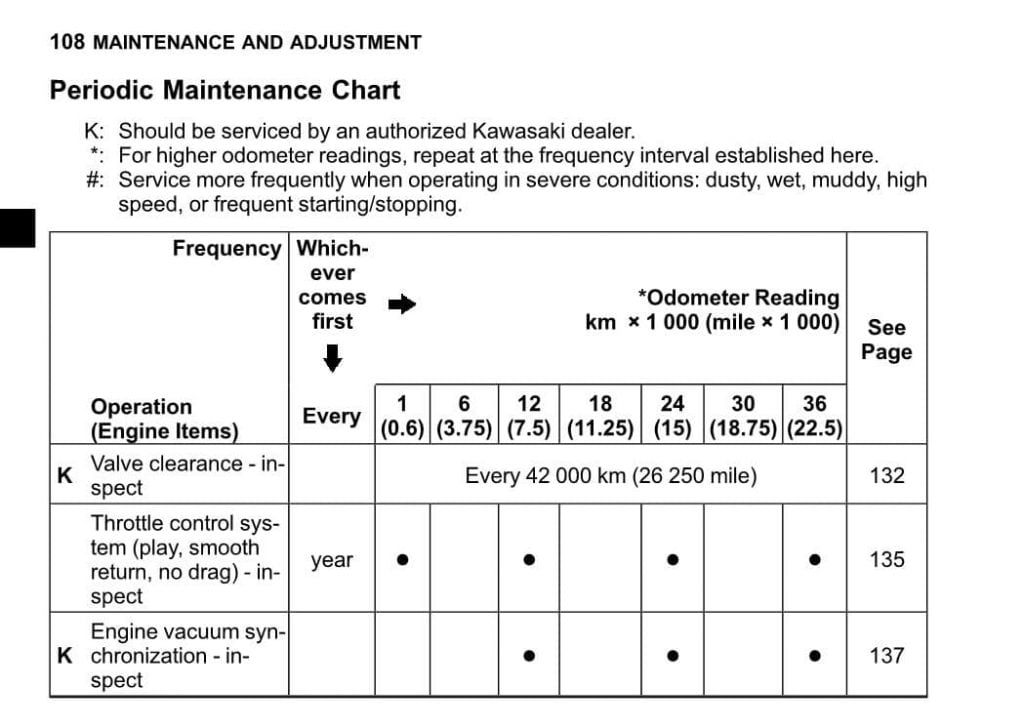
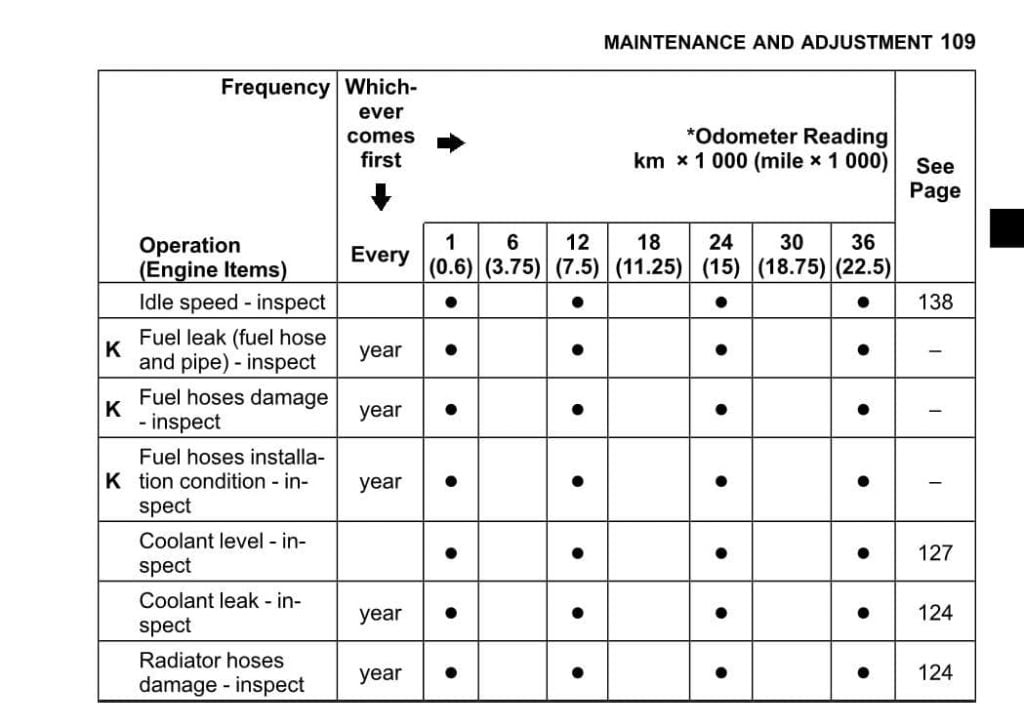
The above maintenance schedule and service intervals for the Kawasaki Versys 1000 came straight from the manual for the 2014 model. It’s equivalent to the earlier years of 2012 and 2013.
You can get the manual on Kawasaki’s website here.
